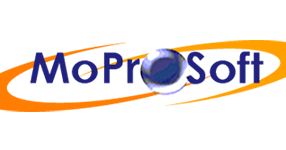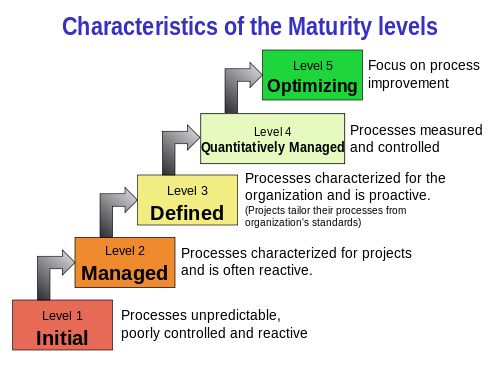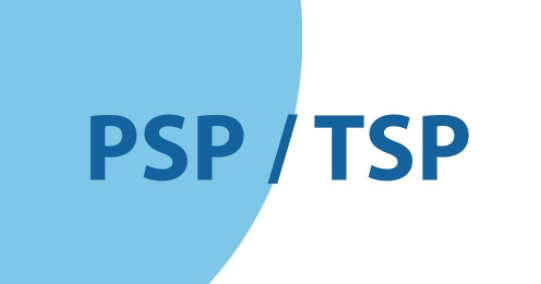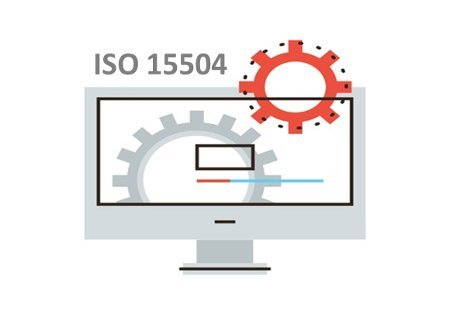The role of standards in Software Quality
CMMI
This was created for the U.S. Department of Defense to assess the quality of their softwares. CMMI is not used only for software, but also in other companies.
It is based in three areas:
- Proccess development
- Service establishment and managment
- Product and service acquisition
These are the levels of the CMMI:
TSP/PSP
This model is a complement to the CMMI. The PSP model is oriented to work yourself, then the TSP is made to work and improve for teams,and the CMMI is Organizational.
This is very nice because first of all you need to know how to work alone, and then you can learn to work in teams.
ISO-15504
This model establishes requirements for an evaluation of process. Any requirements can be applied to evaluations models, so this can be applied to any product, not just softwares.
This model contains a reference that defines a process and capability dimension and can be divided in five categories:
- Customer-supplies
- Engineering
- Supporting
- Management
- Organization
This model is the most “formal”, because it is approved and applied by many organizations. Also, it is the most “complicated” model, so this guarantees that the product will be very well qualified.
MOPROSOFT

It is a process reference model developed in Mexico, this standard is composed of four parts:
- Part 01 Concepts and products definition
- Part 02 Process requirements (MoProSoft)
- Part 03 Process implementation guidelines
- Part 04 Evaluation principles (EvalProSoft)
The MoProSoft process model consists of three layers or categories:
- High Management: contains the Business Management process.
- Management: composed of the Process Management, Projects Management and Resources Management processes.
- Operation: includes the Specific Project Management process (SPM), Software Development and Maintenance process (SDM).
IDEAL method
The IDEAL model is named for the five phases an organization runs through in performing a change initiative: Initiating, Diagnosing, Establishing, Acting, Learning.
It’s an organizational improvement model which serves as a kind of roadmap for initiating, planning, and implementing process improvement actions for defect reductions.
This model is similar to the waterfall method, you first detect your problems, then you prepare a plan of action and then you follow it.






